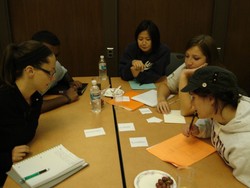 I am happy to announce that the 2018 Revised Annoated Bibliography of Postsecondary Peer Cooperative Learning Programs is now available to download. Click on this link for a PDF or Word version of it.
I am happy to announce that the 2018 Revised Annoated Bibliography of Postsecondary Peer Cooperative Learning Programs is now available to download. Click on this link for a PDF or Word version of it.
There are now nearly 1,500 entries spanning 488 pages. I noticed recent listserv conversations about locating research studies to support Supplemental Instruction programs or similar approaches operating at the college level. The directory grew significantly in the past two years. The directory includes the Emerging Scholars Program (Dr. Uri Treisman model), Peer-Led Team Learning, Supplemental Instruction, and Video-based Supplemental Instruction, Structured Learning Assistance, Accelerated Learning Groups, and Peer Assisted Learning.
You can download the directory as a PDF or Word document. I also included some sub-topics of the directory such as facilitator development, vocational influence, identity development and more. I also provide the EndNote library file to allow you to more easily search the database for the topic you want. Be sure also to download the keyword search guide to discover all the ways to search the contents for the information you want. Other bibliographic database systems may be able to open the EndNote file but I am not an expert with that process.
No doubt I missed some citations related to these seven major peer learning programs. Please send me the citation and perhaps a copy of the publication and I will be happy to include in an update. Thanks for consideration.



